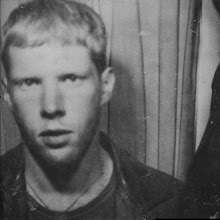


From Lens Culture:
NAMI is a series of photos of waves around the shores of Sado Island in Japan. The photographer, a young Buddhist monk named Syoin Kajii, watches the water patiently, waiting for a moment of surprise.
We discussed his work via email. Here is an excerpt of our conversation:
JC: Do you feel a strong connection between the way you make photographs and your practice as a Buddhist monk?
SK: Basically I'd like to separate my religion and photography. I sometimes feel, however, there is some kind of similarity in practicing and reciting Buddist sutras and in being concentrated to photograph waves.
JC: It seems natural to see references in your work to the Japanese wood block art prints of waves from long ago. Do you see your work as a continuation of that artistic tradition?
SK: I've never consciously photographed waves with reference to the wood block prints, nor intended to work as a continuation of the tradition. The temple I live in now on Sado Island commands a bird's eye view of the sea naturally, and while overlooking the view everyday, I found fatherly strongness and motherly tenderness in the sea, and it fostered me to photograph NAMI.
JC: Can you describe how you prepare for making photos like those in your NAMI series? Do you consult tidal charts and wait for high tide? Do you shoot a lot of frames? How long do you stay planted by your camera at each location – several hours or more?
SK: All the pictures of the NAMI series were taken around Sado Island, where I currently live. The coast of the Island is about 270 km, and I choose places to photograph based on the information from weather forecasts or news from fishermen.
Using a digital camera, I photograph waves by staying in the water, or going down on the rocky seaside. I often stay there like that about 5 ~ 6 hours, but normally I try to capture the very moment I was somehow startled, so it's not only targeted to just high waves.
JC: What are the qualities of waves that attract you to them?
SK: That would be perhaps because they have variety of expressive faces (like fatherly power and motherly generosity).
JC: Some of your photographs of waves make them look threatening, dangerous, dark, ominous and frightening. Others make the waves seem like graceful dancers — powerful, but beautiful and full of poetic gesture. Do you see this as a dual nature?
SK: Well... Waves (or in other words Nature) should have various aspects.
7.7.09
COOL WAVES
Posted by
P.J.S.
at
15:42
![]()
Labels: contemporary art, exploration, japan, ocean
Subscribe to:
Post Comments (Atom)

No comments:
Post a Comment